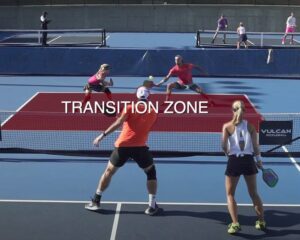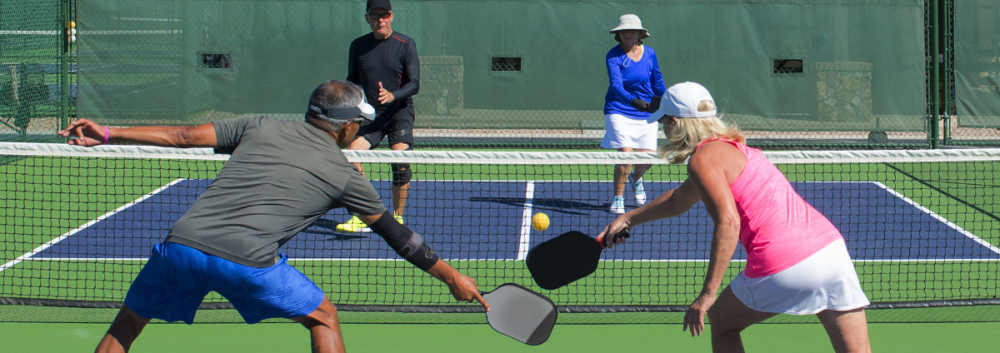The zone of transition is often referred to as no man’s land for a reason. It can be very dangerous! It’s an area of the court you pass through on your way to the kitchen line or the baseline. While you are in no man’s land you are vulnerable to attack by the opposition. You need to get out as soon as possible. However, inevitably there will be times when you will have to play shots from there, particularly drop shots, passing shots down the middle or down the line, and occasionally lobs. But these often have to be played round your feet or as a reaction shot, both of which can be difficult to control. Play it as best you can and, depending on what shot it is, move either to the NVZ line or back to the baseline. If it is a good drop shot (the usual shot to play when trying to move up the transition area), or a good lob, move up. If it’s a high shot that can be attacked, more often than not you are better off dropping back keeping your paddle low anticipating a shot around your feet. If the ball comes rocketing at you at chest height, it’s going out so get out of the way! Be sure you and your partner advance or drop back together (see playing doubles as a unit) or you are giving your opponents some inviting targets to hit into.
Quite often you won’t be able to get from the back of the court to the NVZ line in one move and have to play 2 or more shots to advance to the kitchen. While moving in the transition zone, just before your opponent hits the ball, stop moving, stabilize in the ready position. Have your feet shoulder width apart with one foot slightly forward of the other to help push off forwards or backwards as necessary, and raise a little on to your toes. Hold your paddle in the ready position and you are giving yourself the best chance to deal with anything that comes your way. If you play a good drop from there you can continue forward to the NVZ line.

